A Past, A Future
A Past, A Future
Celine Lee, Miguel Lorenzo Uy
Walking into the exhibition space, a viewer might feel that they have walked into a sensorial experience set-up, complete with lights, steel, video, and space. What they are actually stumbling upon is a plethora of mechanical reproductions that transcend its photographic sources and displaced ritual origins after being subjected to various techniques of digital manipulation.
Repeating Images, the Past Repeating.
In his 2003 treatise “The Work of Art in the Age of Biocybernetic Reproduction” – a response to Walter Benjamin’s 1935 “Mechanical” version – Art Historian W.J.T. Mitchell posits that a copy is no longer inferior to its original, but rather an improvement on it: the aura that Benjamin argues has disappeared has increased instead. In “A Portrait of the Sun,” Celine Lee expands on her series of photographs printed on mirrors, providing a simulacra of the star through nuanced notions that replicate the sun’s illumination, albeit through indoor lighting. The viewer’s experience of “standing in the sun” is elevated through a literal aura within the space. Meanwhile, the reversal in the relationship of the aura and the copy is also evident in Miguel Lorenzo Uy’s “Astral Prison,” where repeated images of flashes of light reflected on a black screen actually elevates it to a more appealing visual – that of stars out in the infinite cosmos. From the Greek word “to steer,” “cybernetics” implies control, a rigidity of sorts, while on the other hand, “bios,” as many would know, is all about the natural world of organisms – something with a reputation of “finding a way.”
Transforming elements, the Future Transformed.
Appearing as a suspended structure, “Copper Vines” illustrates Lee’s depiction of an urban transformation where steel transitions into copper. At first it appears as if rust slowly consumes the iron structure, but at the same time presents the copper as a living organism, creeping up the rigid grids and slowly changing its core composition. Further extending into science fiction, Uy regales the viewer with something straight out of a Star Wars film: slow panning, drifting across the screen are monolithic structures one can think of as spacecrafts travelling through the infinite universe. They are actually closer than you think. Architecture from malls and commercial buildings provide the perfect backdrop for an imagined future, looking up and marvelling at physical structures made to control human behavior, with its banality possibly turned on its head by what Mitchell calls “a fantasy taking on a life of its own.” The stars in the background are actually the same flashes of light mentioned earlier.
In fleshing out their notions of a past and a future, Lee and Uy took moments, memories, and fantasies – the biological, and subjected them to the manipulation of the digital code – the cybernetic. The resulting work of art is controlled and communicative, but at the same time rejects control and refuses to communicate – a metaphor for our times where more information has been made available to a greater amount of people through a wider array of media. In the end we find ourselves more disconnected.
- – Koki Lxx
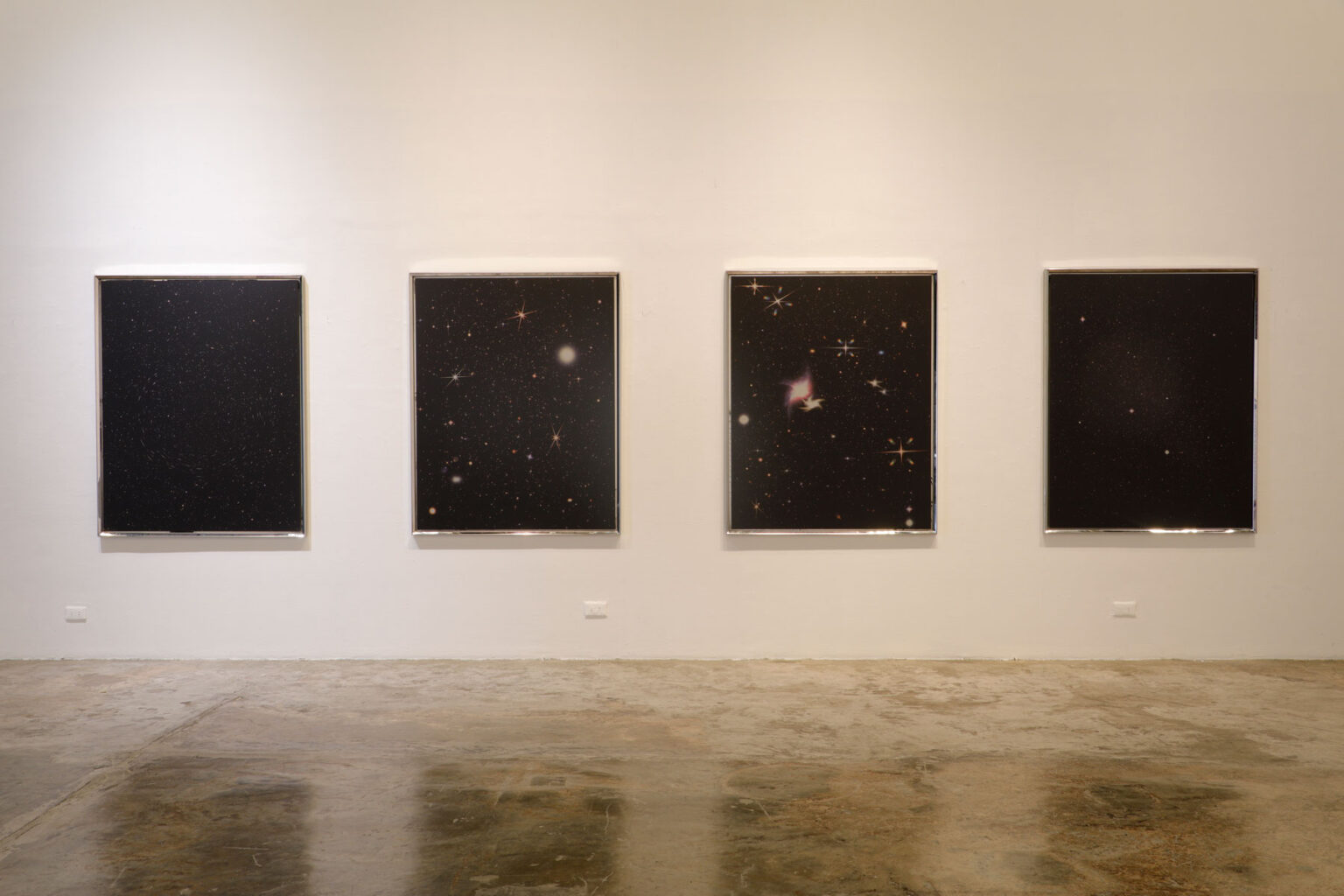
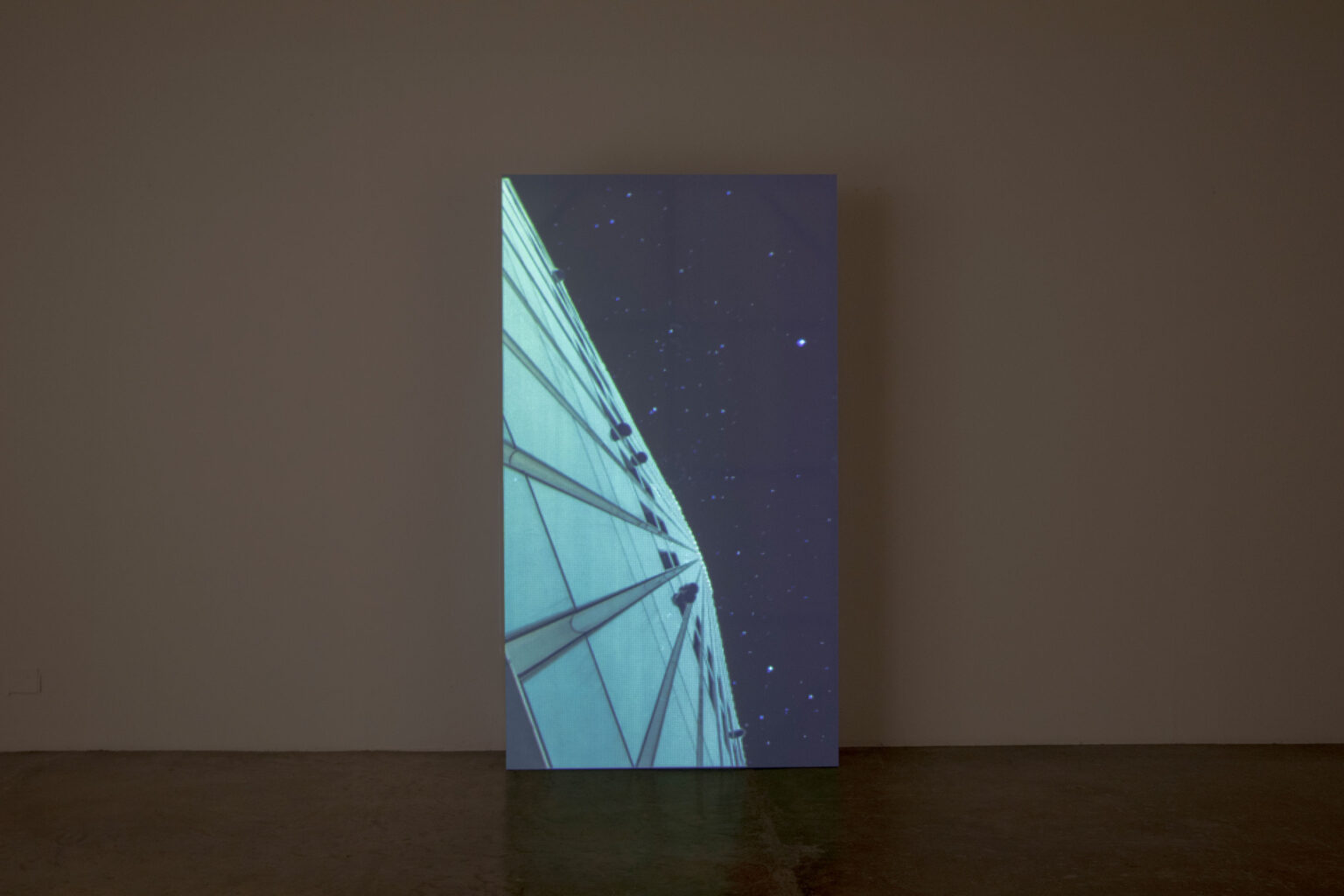
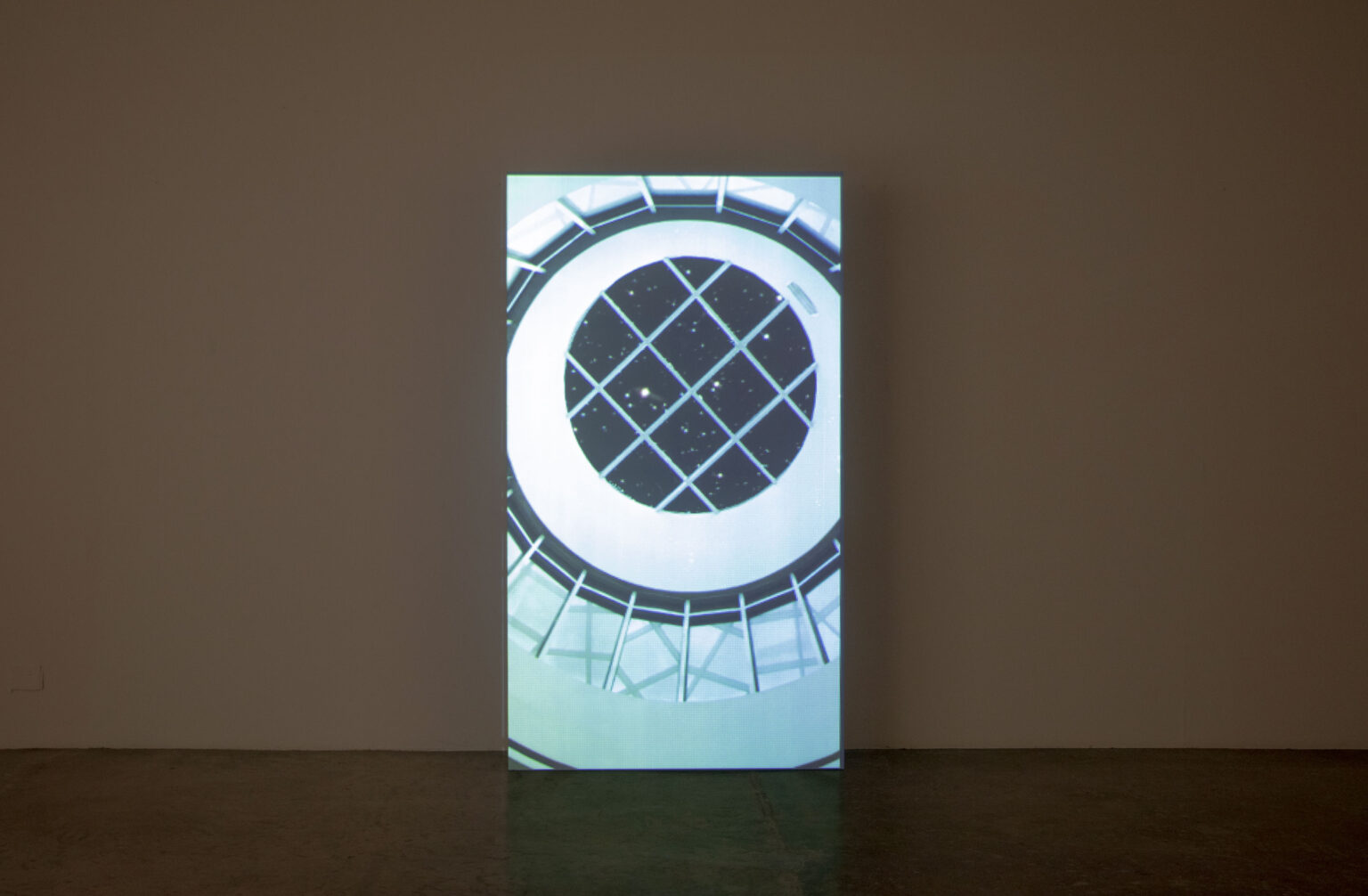
-
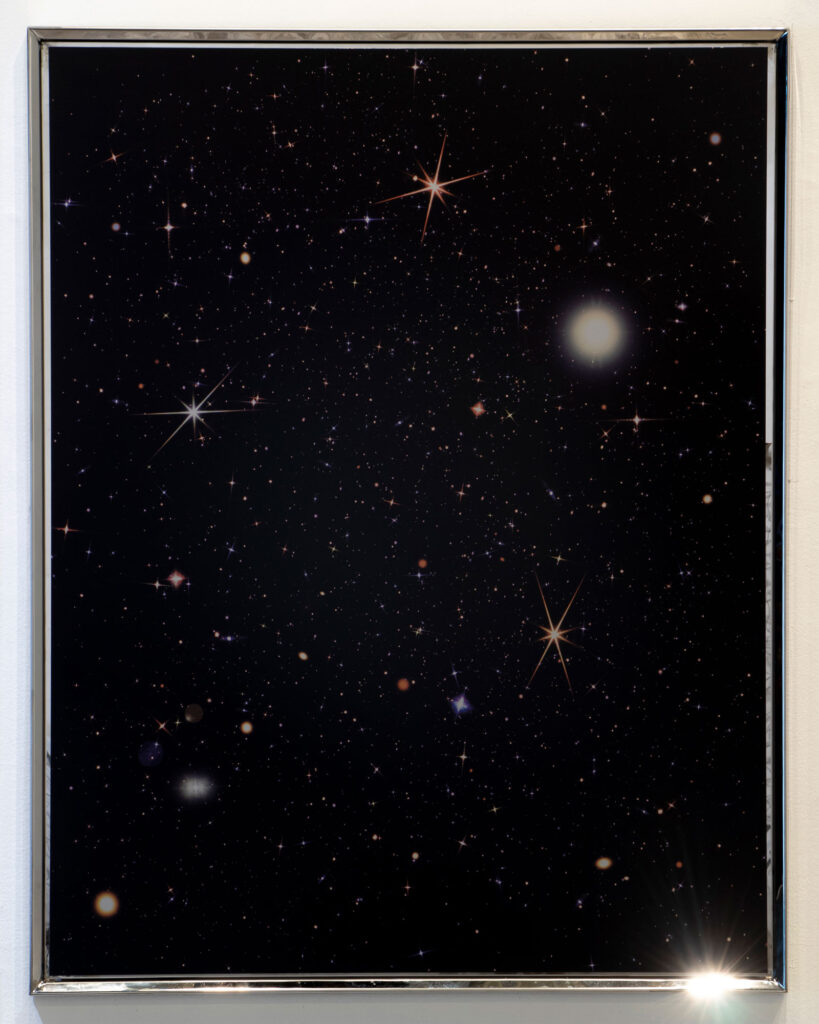
- Astral Prison, UV print on aluminum composite panel, mirror-finish stainless steel, 48 x 60 in., 2022
-
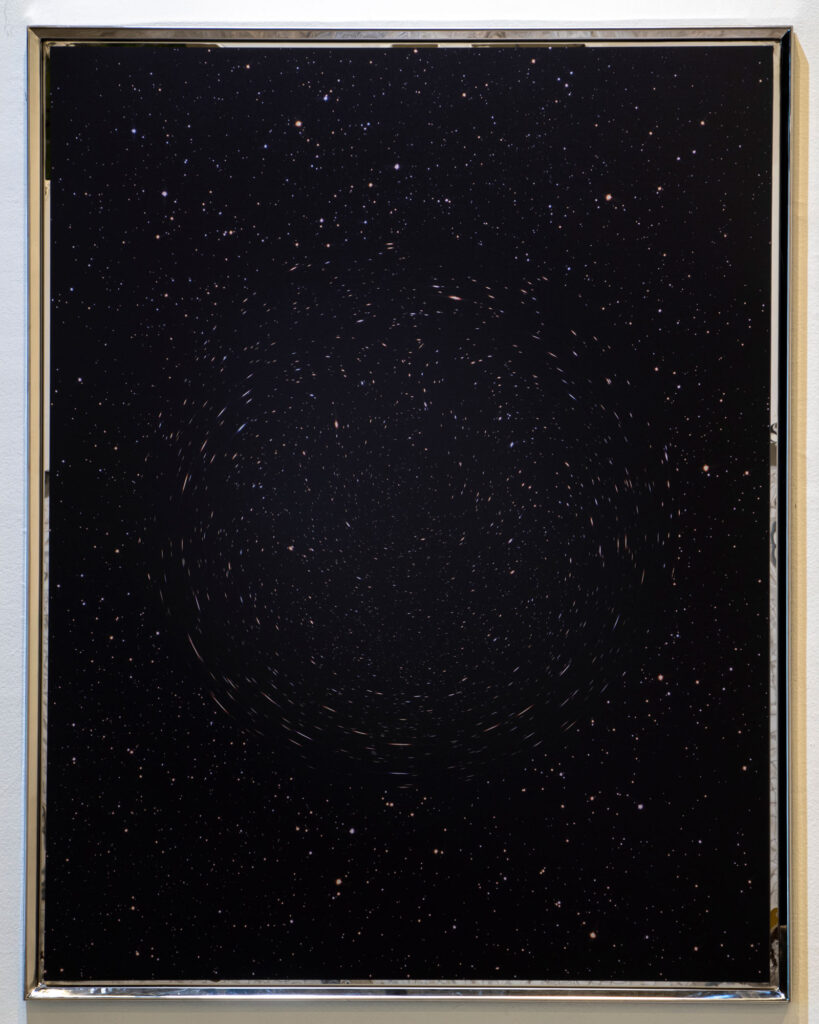
- Astral Prison, UV print on aluminum composite panel, mirror-finish stainless steel, 48 x 60 in., 2022
-
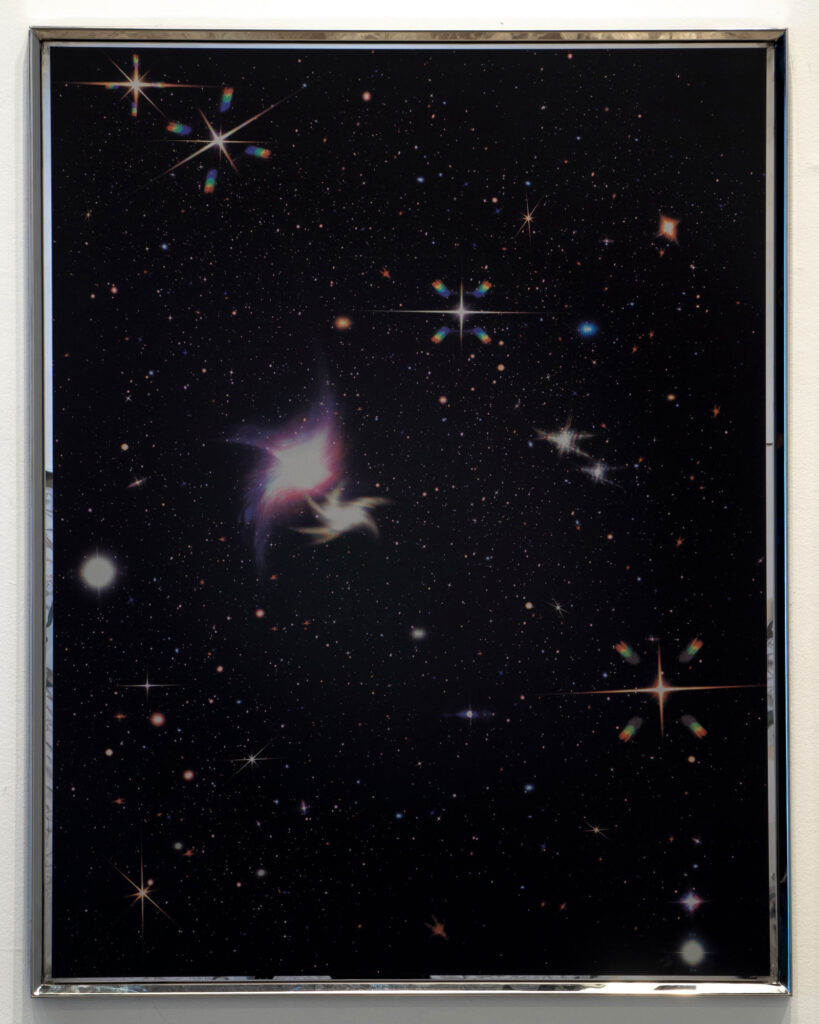
- Astral Prison, UV print on aluminum composite panel, mirror-finish stainless steel, 48 x 60 in., 2022
-
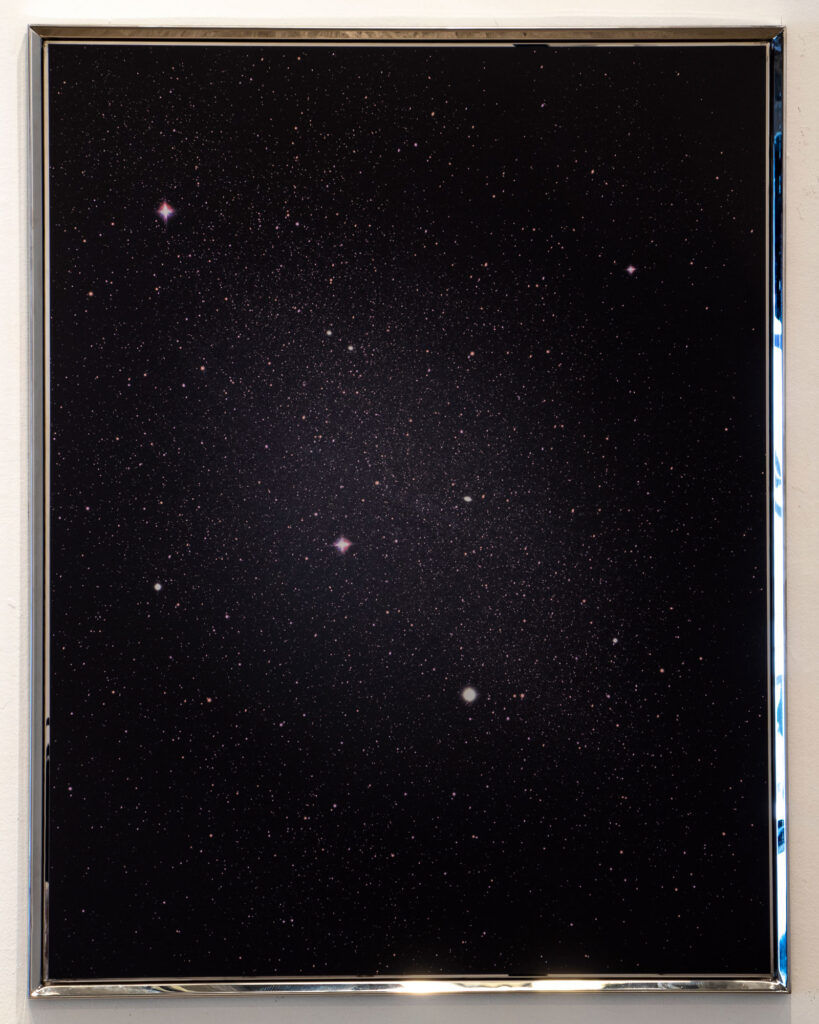
- Astral Prison, UV print on aluminum composite panel, mirror-finish stainless steel, 48 x 60 in., 2022
Copyright © 2023. Miguel Lorenzo Uy
